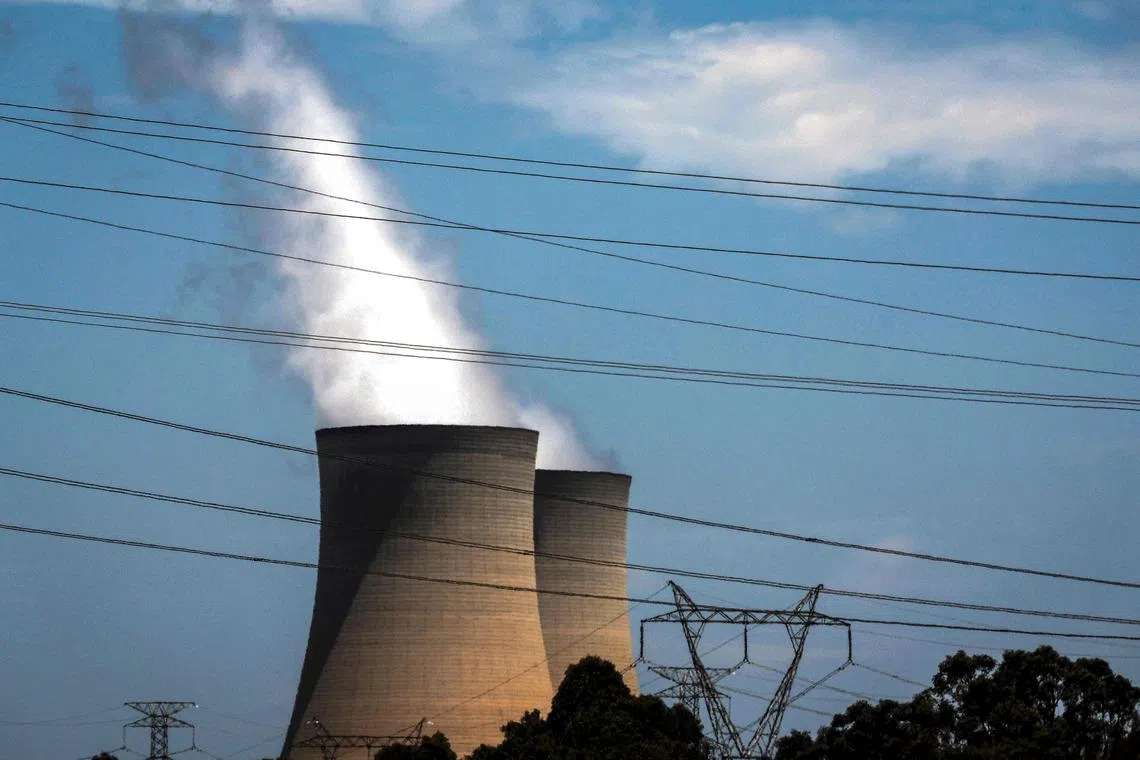Australia says reliance on coal-fired power drops to record low
Sign up now: Get insights on Asia's fast-moving developments

Australia – one of the world’s leading coal exporters – has vowed to reach net zero carbon emissions by 2050.
PHOTO: AFP
Follow topic:
SYDNEY - Australia’s reliance on coal-fired power stations has dropped to a record low, providing less than 50 per cent of its electricity for the first time, the market operator said Jan 30.
Overall electricity demand hit a record high in the final quarter of 2024 as temperatures rose and people shifted away from gas, the Australian Energy Market Operator said.
At the same time, roof-top solar output surged 18 per cent and grid-scale solar climbed nine per cent – both reaching record levels, it said in a report.
“The rise in rooftop solar output, coupled with record low coal-generation availability, resulted in coal-fired generation contributing less than 50 pe rcent of the NEM’s total generation for the first time,” said Ms Violette Mouchaileh, a senior official at the market operator. NEM refers to the national electricity market.
Renewable energy sources supplied a record 46 per cent of electricity in the quarter, she said, peaking at 75.6 per cent on Nov 6.
That drove greenhouse gas emissions in the period to record lows, the market operator said.
Australia’s government last week announced an extra US$1.2 billion (S$1.62 billion) in clean energy financing to speed a transition from coal and other fossil fuels to renewables.
The country – one of the world’s leading coal exporters – has vowed to reach net zero carbon emissions by 2050.
Climate wars
But the energy authorities say quick action is needed to fill the gap left by shuttered coal-fired power stations.
Wholesale electricity prices surged 83 per cent during 2024, the report noted, mostly due to high demand, the decline of available coal-fired power, and transmission constraints.
Over the past decade, an ideological brawl dubbed the “climate wars” has dominated Australian politics, repeatedly undermining attempts to reduce carbon emissions.
In the run-up to general elections that must be held by May 17, Australia’s conservative opposition Liberal Party has announced plans to launch nuclear power so as to rely less on solar and wind.
The national science agency, the Commonwealth Scientific and Industrial Research Organisation, said in a report in December 2024 that nuclear power would be 50 per cent more expensive than renewables and would take at least 15 years to build.
Australia sits on bulging deposits of coal, gas, metals and minerals, with mining and fossil fuels stoking decades of near-unbroken economic growth.
But it has also begun to suffer from more intense bushfires and increasingly severe droughts and floods, which scientists have linked to climate change. AFP

